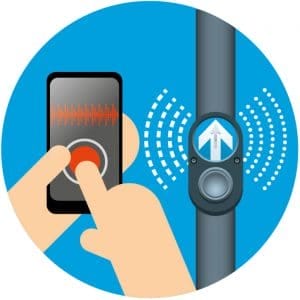The butterfly effect: How a 19th century royal wedding led to a record-breaking hit

In DG #38 we looked at how a 19th-century royal wedding ban led to a record-breaking crossover hit.
This infographic was published in DG #38. Pick up a copy in our online shop or take out an annual subscription using the promotion code ‘SLOWNEWSDAY’ for 10 percent off.
20th July 1886
Sybil Frances Grey weds William Eden Bart at St Paul’s Cathedral. She had previously been set to marry Francis Knollys, private secretary of the Prince of Wales, but the future King Edward VII forbade the match.
Grey and Bart take the name Eden and go on to have five children.
6th December 1923
The third of the Eden children, Robert Anthony, develops an interest in politics. At the age of 11, he astounds his mother by recounting the MP and majority of every constituency they pass through on a train journey. In December 1923 he is elected to parliament at the age of 26.
May 1940
Now secretary of state for war, Eden announces the creation of a new civilian force for those ineligible for military service because of their age, occupation or health. Nearly 1.5 million Britons enrol to be part of what becomes known as the Home Guard.
Summer 1940
Jimmy Perry, a 16-year-old aspiring actor, joins the Home Guard as a member of the Watford company of the Bedfordshire and Hertfordshire Regiment. The move finally earns him the respect of his father, who had often chided him with the phrase “you stupid boy” for his flightiness and interest in the theatre.
31st July 1968
Perry, now a struggling actor, channels his experience of the Home Guard into a script for a sitcom called The Fighting Tigers in which he hopes to star. He shows it to veteran BBC producer David Croft. Together they develop the series into Dad’s Army, which debuts in July 1968 and is soon the most popular comedy show on British television.
July 1969
The UK ministry of transport unveils the ‘pelicon’, a new light-controlled pedestrian crossing. After the public failed to understand the similar Panda crossings a few years earlier, the ministry enlists the cast of Dad’s Army to explain how the pelicon works. The publicity campaign is a success and the redubbed pelican crossings spread across the UK.
June 1976
Australian acoustic engineer Louis Challis publishes a design for an audio-tactile crossing. His design adds audio cues to pelican crossings to let visually impaired people know when it is safe to cross. He is offered the chance to patent his invention, but refuses in the belief that the technology should be made as widely available as possible.
29th April 1986
The PB/5 pedestrian button, a refinement of Challis’s design, is patented. The new version adds a two-rhythm buzzer comprising a slower beat warning people not to cross which transitions to a faster rhythm indicating that it is safe to cross. The crossing is a huge success and is used in Australia, Ireland, the US, New Zealand and Singapore.
5th February 2017
Sixteen-year-old American singer Billie Eilish, on tour in Australia, takes a walk around Sydney with her mum. While crossing the road she is struck by the sound of the PB/5 pedestrian crossing. She records it on her phone and shares the audio file with her brother and producer Finneas O’Connell.
29th March 2019
Billie Eilish releases the track ‘Bad guy’, based on the recording of the PB/5 pedestrian crossing. The song reaches number one in the US, Australia and Canada among other places.
26th January 2020
‘Bad guy’ wins ‘Record of the Year’ at the 62nd Annual Grammy awards, making Eilish the youngest ever winner of the Grammy’s most prestigious category. It is one of five awards the musician collects on the night.
Slow Journalism in your inbox, plus infographics, offers and more: sign up for the free DG newsletter. Sign me up
Thanks for signing up.
















